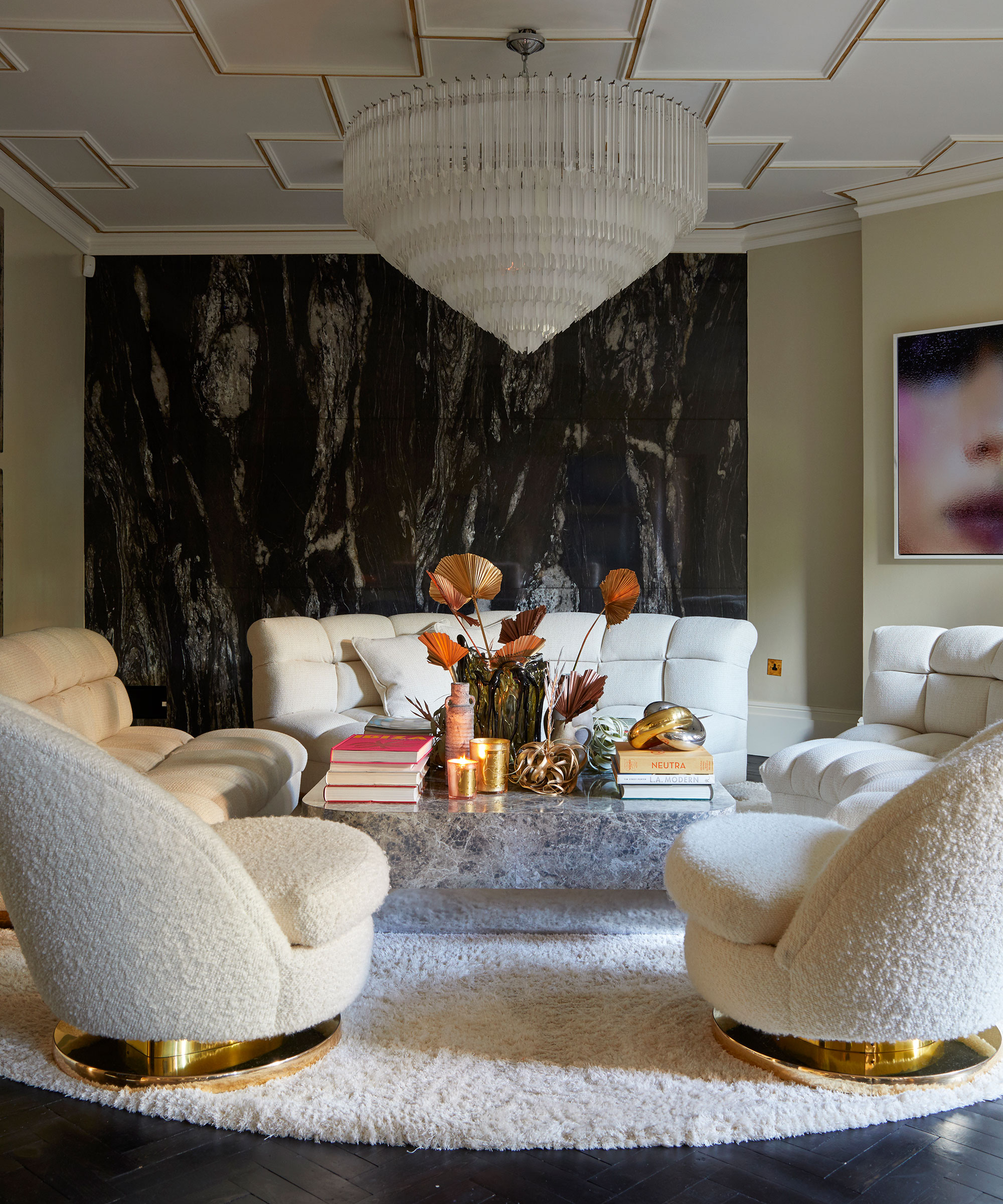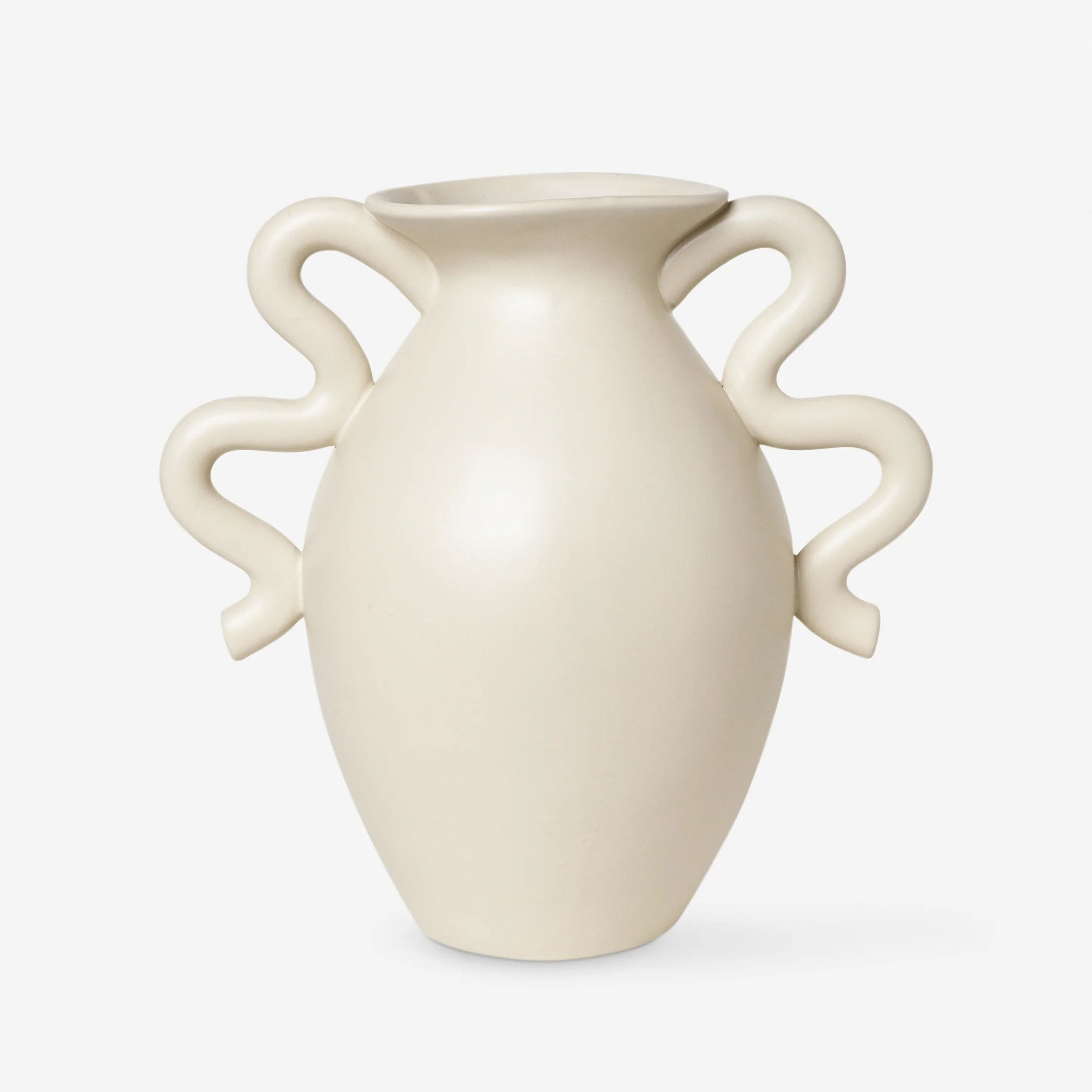Anne Hathaway’s living room showcases the ultimate furniture arrangement – experts are praising her perfect ‘conversational seating'
A smart furniture layout is essential for entertaining, and Anne Hathaway’s living space does it flawlessly


The foundation of a great living room lies in its practicality, and the layout you select should not only accommodate your everyday lifestyle but flawlessly enhance it for hosting. With the fall and winter entertaining season upon us – from Thanksgiving gatherings to Christmas parties – inspiration for mastering a social floorplan comes directly from Anne Hathaway's elegant, chalet-style living room, the product of designer Pamela Shamshiri’s Studio Shamshiri.
The Devil Wears Prada actress and her husband, Adam Shulman, have perfected the 'conversational seating' method – a living room seating arrangement that top designers agree is the most effective way to maximize your floor plan, specifically for hosting.
A post shared by Studio Shamshiri (@studioshamshiri)
A photo posted by on
Design icon Nina Campbell is a champion of this method for arranging living room furniture, defining it as a living room layout designed entirely around promoting interaction, best exhibited in Hathaway's space.
To start, figuring out your central point is vital. 'For example, when designing a living room with a traditional fireplace, this will be a central point,' Campbell advises. 'You can then either have the living room sofa to one side with a couple of chairs opposite. Alternatively, you can position the couch so it’s facing the fireplace and chairs on either side.'
To encourage a relaxed and engaging atmosphere – perfect for long holiday evenings – it’s always good to throw off the symmetry of the room and add an extra dimension with mismatched furniture, color schemes, shapes, and styles.
Beyond aesthetics, the placement of individual chairs is key to preventing social awkwardness and making any living room furniture arrangement mistakes. The interior designer Elsie de Wolfe once wrote in 1913 that you must never place a chair on its own in a room, noting that it is always the shy person who arrives first, sits on the lone chair, and is then often rooted there for the whole party.
For effective conversation, aim for 'conversational triangles' where guests face each other naturally. I find that two people sitting side by side do not always speak to each other, so having an occasional chair pulled in at a diagonal can create conversational triangles, similar to the seating placement in Anne Hathaway's home.
Design expertise in your inbox – from inspiring decorating ideas and beautiful celebrity homes to practical gardening advice and shopping round-ups.

Living room with a conversational seating layout
Another non-negotiable for effortless entertaining is accessibility: you should arrange your seating so every guest is within arm's reach of a side or coffee table.
This season, perfecting the conversational layout is vital. Use the central coffee table – as seen flawlessly utilized in Anne Hathaway's space – not just for drinks but as the main communal feature. We suggest replacing decorative art books and vases with small, tabletop Christmas trees or seasonal decor, while leaving ample room for a generous charcuterie or dessert board in the center of your social place. This way, your guests are all at an equal distance from the food, making it easy to eat, drink, and be merry long into the evening.
Finally, never compromise on the quality of your foundational pieces, especially when anticipating heavy holiday use. 'The sofas and bigger pieces of furniture should be covered in a tough, strong, and relatively plain fabric so you don’t tire of it; they are expensive to recover. You can jazz them up with cushions and throws,' Nina Campbell advises. Investing in durable, high-quality upholstery means your gorgeous, conversational layout will last through many holiday seasons to come.
Shop the look

Crafted from a blend of kiln-dried solid and engineered wood, this modern coffee table features a practical tray-style top that’s perfect for entertaining. It keeps snacks and drinks secure while leaving plenty of space for decorative accents like candles and books, combining style and functionality in one elegant piece.

Inspired by the striking olive green chair in Anne Hathaway’s living room, this wingback blends vintage charm with contemporary style. Designed by Jake Arnold, founder of The Expert and the creative force behind multiple celebrity homes, it brings timeless sophistication and 'old money' elegance to any living space – what’s not to love?

Add a touch of timeless elegance to your space with the Verso table vase. Its ceramic body is accented with gracefully curved handles, creating a striking, sculptural silhouette. Perfect for modern interiors with classical touches, this piece effortlessly blends sophistication and eclectic charm.

Jennifer is the Digital Editor at Homes & Gardens, bringing years of interiors experience across the US and UK. She has worked with leading publications, blending expertise in PR, marketing, social media, commercial strategy, and e-commerce. Jennifer has covered every corner of the home – curating projects from top interior designers, sourcing celebrity properties, reviewing appliances, and delivering timely news. Now, she channels her digital skills into shaping the world’s leading interiors website.